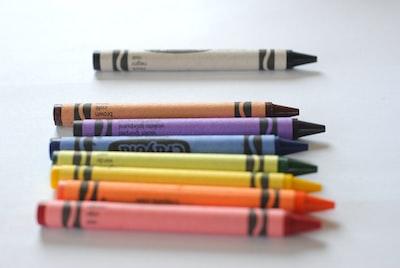The Psychology of Colors A Journey into Vibrational Therapy
- admin
- 0
- on Oca 09, 2024

Have you ever wondered why certain colors evoke specific emotions in us? Colors have a profound impact on our psyche and can influence our mood, behavior, and even physical well-being. This fascinating phenomenon is known as the psychology of colors. In this article, we will take a journey into the realm of vibrational therapy and explore how colors can be used to heal and restore balance.
Colors carry their unique vibrations, and each hue resonates with different aspects of our being. Let's start with the color red. This vibrant hue is associated with energy, passion, and strength. It can stimulate and increase our heart rate, making us feel more alive and alert. Red is often used to promote adrenaline rush in sports settings or to grab attention in advertising.
On the other end of the spectrum, we have blue, a color that exudes calmness and tranquility. Blue has a soothing effect on our minds and bodies, reducing stress and promoting relaxation. It is often used in bedrooms and meditation spaces to create a serene environment conducive to rest and introspection.
Green, the color of nature, represents harmony and balance. It has a calming and rejuvenating effect, making it ideal for healing environments. Green is frequently used in hospitals and healthcare facilities to promote a sense of calm and well-being.
Yellow, the color of sunshine, brings warmth, optimism, and happiness. This bright hue can boost our mood and energize us. It is often used in spaces where creativity and positivity are encouraged, such as art studios and children's play areas.
Moving along the spectrum, we come to orange, a color that radiates enthusiasm and vitality. Orange combines the energy of red with the cheerfulness of yellow, creating a vibrant and uplifting atmosphere. It is commonly used in restaurants and entertainment venues to create a lively and stimulating ambiance.
Lastly, we have purple, a color associated with spirituality and introspection. Purple has a calming effect on the mind and can enhance our connection to the divine. It is often used in meditation practices and spiritual settings to facilitate deep introspection and inner exploration.
Unlocking the Power of Colors: Exploring the Psychology Behind Vibrational Therapy
Have you ever wondered why certain colors can make you feel calm, while others energize you? The answer lies in the fascinating field of color psychology. Colors have a profound impact on our emotions and can even influence our overall well-being. In recent years, this understanding has led to the emergence of vibrational therapy, a holistic approach that utilizes the power of colors to promote healing and balance in our lives.
Vibrational therapy is based on the principle that each color has its unique vibration frequency, which can interact with the energy centers in our bodies, known as chakras. By employing specific colors, practitioners aim to restore harmony and enhance the natural flow of energy within us. This therapy can be experienced through various methods such as colored light therapy, visualization, and wearing or surrounding oneself with specific hues.
Let's delve into the psychology behind some key colors used in vibrational therapy:
-
Calming Blue: Often associated with serenity and tranquility, blue has a soothing effect on both the mind and body. It is believed to reduce stress, lower blood pressure, and encourage clear communication. Incorporating shades of blue in your environment, like soft pastels or cool aquamarine, can create a peaceful ambiance and promote relaxation.
-
Energizing Yellow: Bright and cheerful, yellow is known to stimulate the intellect and boost mood. It is associated with mental clarity, optimism, and creativity. Adding pops of yellow in your workspace or wearing yellow clothing can help uplift your spirits, enhance focus, and inspire innovative thinking.
-
Grounding Green: Symbolizing growth and vitality, green is often associated with nature and harmony. It has a balancing effect and is believed to promote emotional stability and physical healing. Spending time in nature or surrounding yourself with lush greenery can bring a sense of calmness and rejuvenation.
-
Passionate Red: Red is a color that evokes strong emotions and is commonly associated with passion, courage, and strength. It is believed to stimulate the physical body, increase energy levels, and promote vitality. Incorporating red accents in your workout routine or using it in your living space can ignite motivation and drive.
-
Tranquil Purple: Associated with spirituality and inner peace, purple has a calming effect on the mind and encourages deep relaxation. It is often used in meditation practices and is believed to enhance intuition and connection with the higher self. Adding touches of purple in your meditation space or wearing purple clothing can aid in creating a serene atmosphere.
By understanding the psychology behind colors, we can unlock their potential to positively impact our well-being. Vibrational therapy harnesses this knowledge, providing a holistic and non-invasive approach to enhancing our lives. So whether you are seeking relaxation, inspiration, or a boost in energy, consider incorporating the power of colors into your daily routine and experience the remarkable effects firsthand.
The Science of Serenity: How Colors Impact Our Emotions and Well-Being
Colors have a remarkable ability to evoke emotions and impact our overall well-being. They hold the power to uplift our spirits, calm our minds, or even ignite passionate feelings within us. The science behind this phenomenon lies in the way our brains perceive and interpret different hues. By understanding how colors affect our emotions, we can harness their potential to create serene and harmonious environments.
Let's start with blue—the color of tranquility and serenity. Imagine yourself standing on a picturesque beach, gazing at the vast expanse of the ocean. The sight of the deep blue water has a calming effect on your mind. Blue is known to lower blood pressure and heart rate, promoting a sense of relaxation and peace. It is often used in bedrooms and meditation spaces to induce a restful sleep and a state of mindfulness.
On the other end of the spectrum, we have vibrant red. This fiery hue symbolizes passion, energy, and intensity. Picture a red rose—the very sight of it can evoke strong emotions of love and desire. Red has been found to increase heart rate and stimulate adrenaline production. It grabs attention and creates a sense of urgency. Businesses often use red in their logos and advertisements to convey excitement and draw customers in.
Green, the color of nature and renewal, brings forth a sense of harmony and balance. Think about a lush green forest—a walk amidst the trees can leave you feeling refreshed and rejuvenated. Green is associated with growth, stability, and feelings of abundance. It has a soothing effect on the eyes and promotes a sense of calmness. Incorporating green into your living space or workspace can create an atmosphere of tranquility and productivity.
Yellow, the color of sunshine, radiates positivity and happiness. Imagine a field of sunflowers—the bright yellow petals instantly uplift your mood. Yellow stimulates mental activity and energizes the mind. It promotes optimism, creativity, and focus. Using splashes of yellow in your environment can foster a sense of joy and optimism.
Colors have a profound impact on our emotions and well-being. By understanding the science behind them, we can harness their potential to create spaces that promote serenity and balance. So, the next time you decorate your surroundings or choose an outfit, consider the powerful influence that colors can have on your state of mind.
From Ancient Wisdom to Modern Healing: Delving into the Therapeutic Effects of Vibrational Therapy
Have you ever felt a sense of calm wash over you while listening to soothing music or being in the presence of nature? That feeling of peace and relaxation is not a coincidence. It's a result of the vibrational energy that surrounds us. In recent years, there has been a resurgence of interest in vibrational therapy, an ancient practice that utilizes the power of vibrations to promote healing and well-being.
Vibrational therapy is based on the principle that everything in the universe is in a constant state of vibration. This includes our bodies, which have their own unique vibrational frequency. When this frequency becomes imbalanced due to stress, illness, or emotional disturbances, it can lead to physical and mental ailments. Vibrational therapy aims to restore harmony by introducing external vibrations that resonate with our natural frequencies.
One popular form of vibrational therapy is sound therapy, which uses sound waves to induce a deep state of relaxation. It is believed that specific frequencies can stimulate the release of endorphins, reduce stress hormones, and help alleviate pain. Instruments like singing bowls, tuning forks, and gongs are used to produce these healing sounds, creating a symphony of vibrations that penetrate every cell in the body.
Another branch of vibrational therapy is crystal healing, which utilizes the unique properties of crystals to restore balance. Crystals are believed to emit their own vibrations, and when placed on or around the body, they can interact with our energy fields, promoting alignment and healing. Different crystals are associated with specific healing properties—for example, amethyst is said to enhance spiritual awareness, while rose quartz promotes love and compassion.
The benefits of vibrational therapy extend beyond relaxation. Research suggests that it can also improve immune function, enhance mood, and support overall well-being. Additionally, many individuals experience a heightened sense of self-awareness and a deeper connection with their inner selves through these therapeutic practices.
Color Your World with Healing Frequencies: Unraveling the Intricacies of Vibrational Therapy
Have you ever wondered if there's more to healing than just traditional medicine? Are you intrigued by alternative therapies that aim to restore balance and promote well-being in a holistic manner? If so, then let's delve into the mesmerizing world of vibrational therapy and discover how it can help color your world with healing frequencies.
At its core, vibrational therapy revolves around the concept that everything in the universe, including our bodies, is in a constant state of vibration. Each cell, tissue, and organ emits a specific frequency, and when these frequencies are disrupted or imbalanced, it can lead to physical, emotional, and spiritual disharmony.
By harnessing the power of healing frequencies, vibrational therapy seeks to restore balance and promote wellness. It operates on the principle of resonance, where certain frequencies can positively influence others. Just like how a tuning fork can cause another nearby tuning fork to vibrate at the same frequency, specific healing frequencies can resonate with our own vibrations, bringing us back into alignment.
One popular form of vibrational therapy is sound therapy, which utilizes various sounds and vibrations to promote healing. Instruments such as Tibetan singing bowls, crystal bowls, and tuning forks are used to produce specific frequencies that can induce deep relaxation, reduce stress, and even alleviate pain. Sound therapy is believed to work by stimulating the body's natural healing abilities and restoring harmony at a cellular level.
Another intriguing aspect of vibrational therapy is color therapy, also known as chromotherapy. Colors possess their own unique frequencies, and by exposing ourselves to specific colors, we can potentially influence our physical and emotional well-being. For example, blue is associated with calmness and tranquility, while yellow promotes mental clarity and creativity. Color therapy can be experienced through colored lights, visualization, or even surrounding yourself with certain hues.
In addition to sound and color therapy, vibrational therapy encompasses other modalities such as energy healing, acupuncture, and biofield therapies. The aim of these practices is to restore balance to the body's subtle energies, promoting overall health and vitality.
As we journey into the realm of vibrational therapy, it becomes evident that there is a vast world of healing frequencies waiting to be explored. By embracing these intricate modalities, we can embark on a path towards holistic well-being, tapping into the power of resonance and allowing our bodies to harmonize with the frequencies that surround us.

